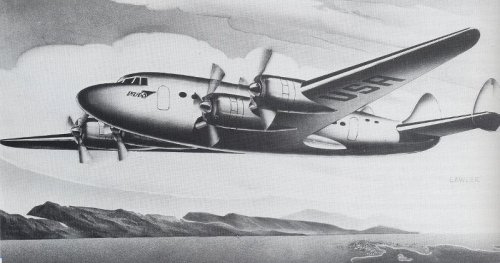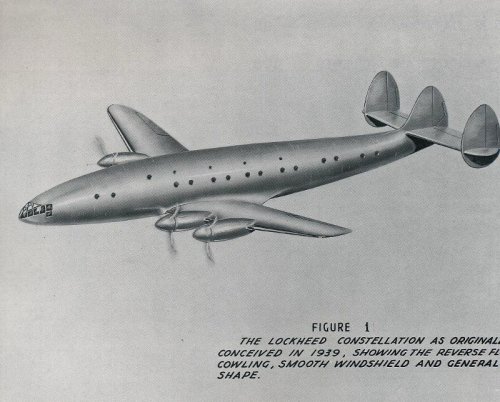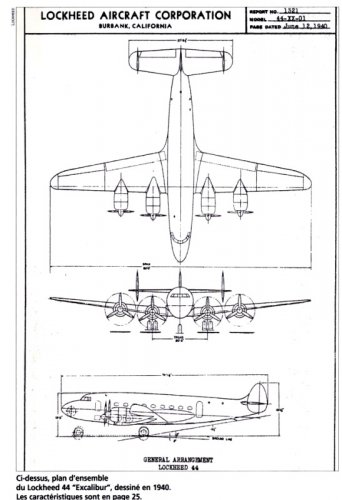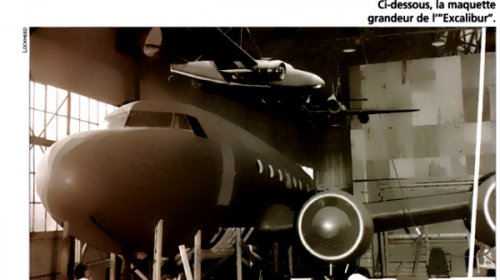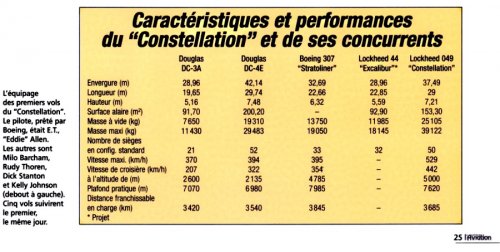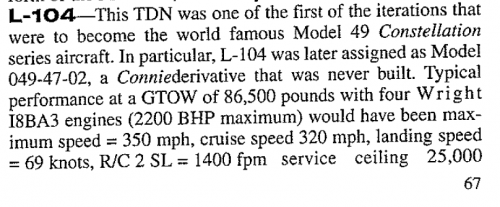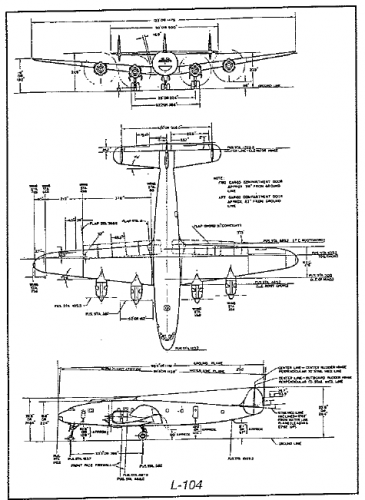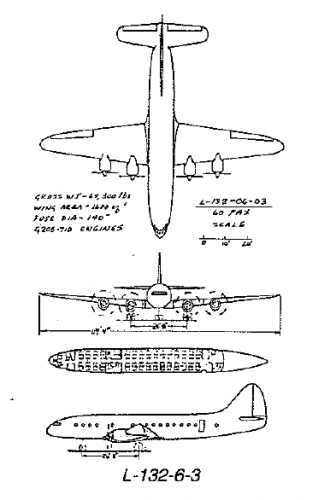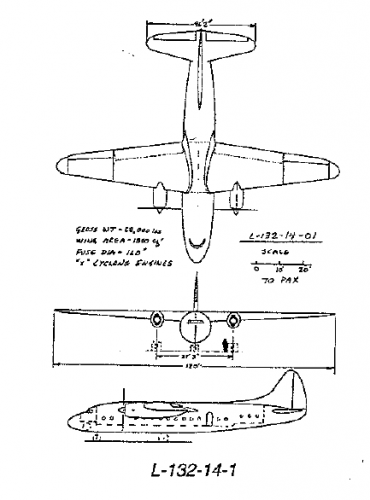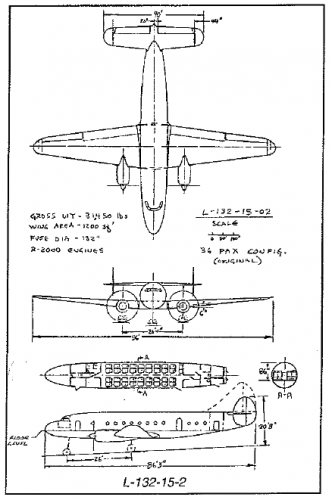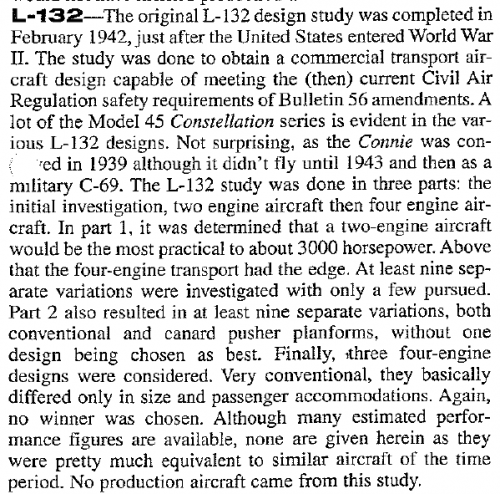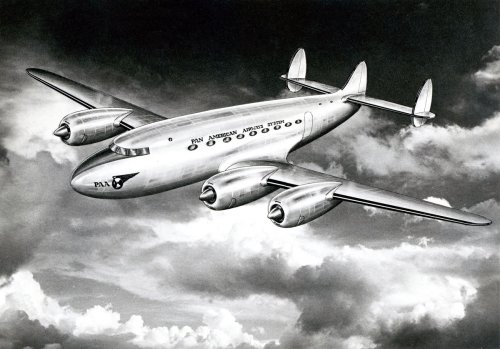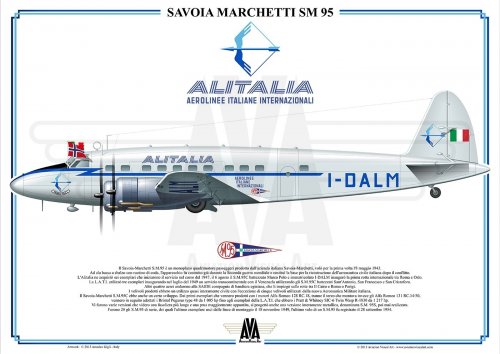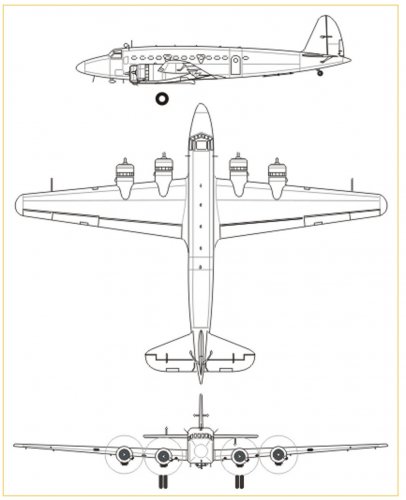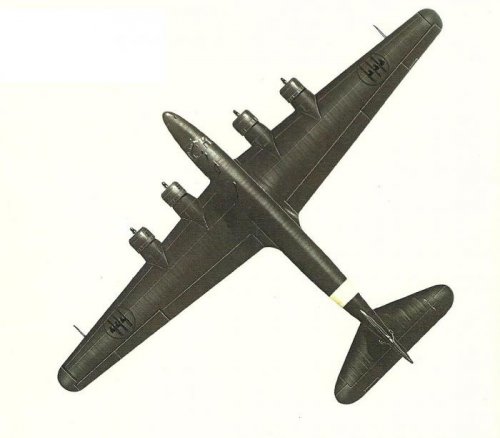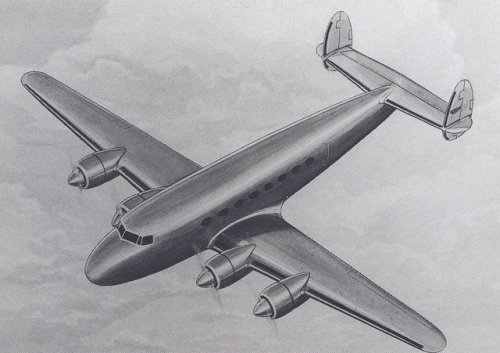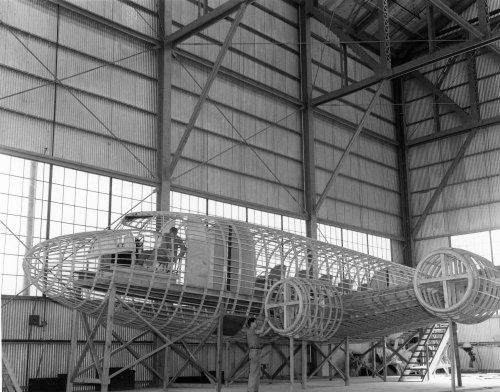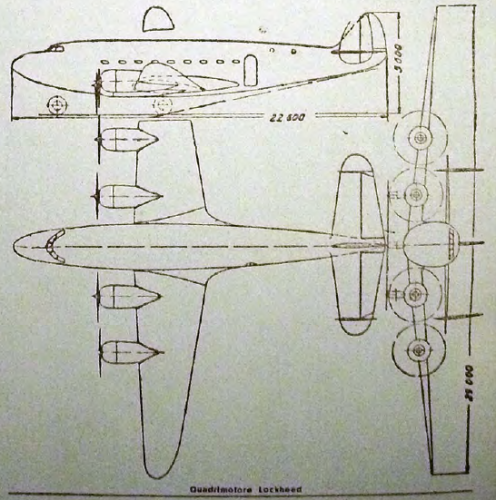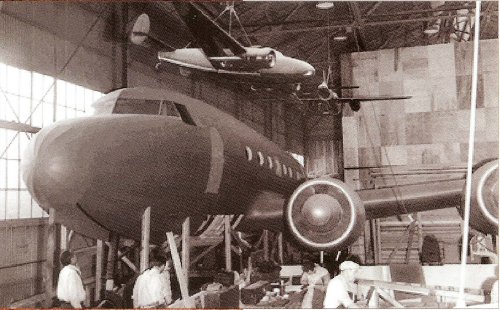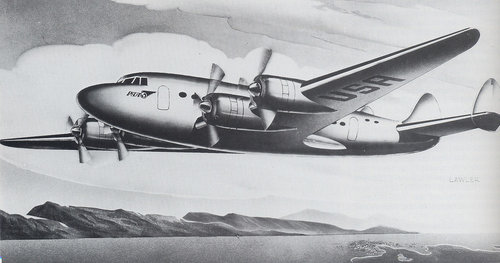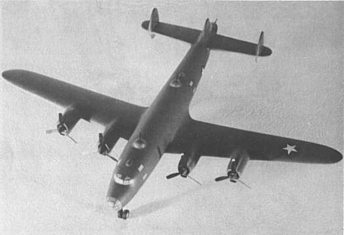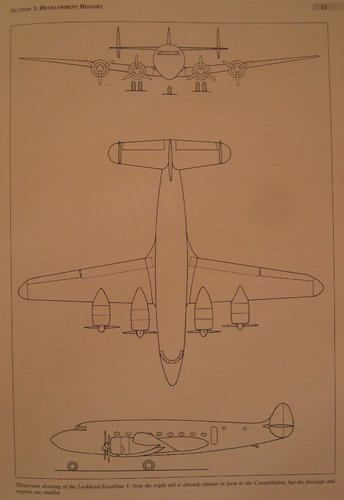thanks justo for bibliographic reference !Justo Miranda said:Regarding the Italian plans to bomb New York during the WWII I have the following bibliography:
- Article by Giorgio Evangelisti published in the Spanish magazine "AVION" in August 1971, where it is said that the airplanes used were Savoia Marchetti S.82.
- The article by Carlo A. Caranci published in the Spanish magazine "Historia 16" in July 1993 states that the airplanes used were Cant Z 511/A and S.82.
- Another article by Giancarlo Garello, published in the French magazine "Avions" no. 63 in Juin 1998, says that the airplanes used were Piaggio P.23 R (MM 285), Cant Z.511 or Savoia Marchetti SM 95.
- In the same vein, there is another article by Alberto Rosselli, published in Aviation History, January 2004, that describes an Italy-Japan secret flight made by a SM.75 GA in June 1942
Bibliography:
"Dimensione Cielo" Nos. 8 and 9
"War Planes of the Second World War" - Floatplanes - Volume Six - by William Green, McDonald 1962
You are using an out of date browser. It may not display this or other websites correctly.
You should upgrade or use an alternative browser.
You should upgrade or use an alternative browser.
Pre-1940 long range airliner projects
- Thread starter snurg
- Start date
..... then SM95B was only version armed of trasport !Skybolt said:Oh my God, the Flieger Revue SM-95B is totally fantasy....
Archi, the "B" used the wings of the civil 95 and a modified SM-82 fuselage.
The Flaps profile is actually a guessdrawing published in an old number of IARB (Italian Branch of Air Britain), the forerunner of Aerofan, I think in 1976... The drawing was a try to recapture the profile of the aircraft based on the few photos (3 in all) of the flying prototype in November 1945 in Centocelle, near Rome. By then the B had been converted (actually, completed) as civilian transport for use with Corrieri Militari. That is the reason of the small windows and of the absence of weapons.
For the long range raid they planned to use the GA version, which wasn't a bomber at all (the bombs would have been propaganda flyers, literally... ;D ).
Ok, I'll start a new topic, but Aerofan n.99 is pretty well available, so please buy it. Just write to my friend Giorgio and ask to be sent a copy: info@apostoloeditore.it
:
archipeppe
ACCESS: Top Secret
- Joined
- 18 October 2007
- Messages
- 2,431
- Reaction score
- 3,152
airman said:..... then SM95B was only version armed of trasport !
:
Just like the SM 82B or the Focke-Wulf Fw 200, neverthelss these arrangements could be pretty effective, if utilized in sufficient number of units (it was a typical problem that affected Regia Aeronautica all over the WWII).
archipeppe
ACCESS: Top Secret
- Joined
- 18 October 2007
- Messages
- 2,431
- Reaction score
- 3,152
Justo Miranda said:Regarding the Italian plans to bomb New York during the WWII I have the following bibliography:
- Article by Giorgio Evangelisti published in the Spanish magazine "AVION" in August 1971, where it is said that the airplanes used were Savoia Marchetti S.82.
- The article by Carlo A. Caranci published in the Spanish magazine "Historia 16" in July 1993 states that the airplanes used were Cant Z 511/A and S.82.
- Another article by Giancarlo Garello, published in the French magazine "Avions" no. 63 in Juin 1998, says that the airplanes used were Piaggio P.23 R (MM 285), Cant Z.511 or Savoia Marchetti SM 95.
- In the same vein, there is another article by Alberto Rosselli, published in Aviation History, January 2004, that describes an Italy-Japan secret flight made by a SM.75 GA in June 1942
Bibliography:
"Dimensione Cielo" Nos. 8 and 9
"War Planes of the Second World War" - Floatplanes - Volume Six - by William Green, McDonald 1962
Many thank for this additional bibliographic information Justo!!
- Joined
- 14 June 2006
- Messages
- 2,300
- Reaction score
- 561
..... then SM95B was only version armed of trasport !
No, it was the other way around. The Sm-95B was very different from the transport version of 1941-42, the SM-95C. To wrap-up:
SM-95 ---- > original shorter version of 1937, basically an SM-75 with four engines, more load but less range (at the same load) - none built - Alfa 126 engines
SM-95C -----> longer civilian versions of the SM-95, designed in 1941 to fill the gap in the LATI fleet to cover the South Atlantic lines to the still neutral countries in South America - 3 ordered, 2 during the war, went to Germany in 1943, one completed after the war - Alfa 128
Sm-95B ----- > night bomber version, wings as the C, fuselage based of the SM-81 one, with a new nose and with changes in the bomber station and weapons. One ordered and not completed (90 per cent) - Alfa 128. Completed in October 1945 as a transport, with weapons and other equipment removed, used by Corrieri Militari and later by Aeronautica Militare.
Sm-95 ------ > post-war, more stretched design, built and used for commercial service. Various engines, mostly P&W.
SM-95GA ------> 1942 project, identical to the SM-95C except for more fuselage gasoline tanks. Projected range, 15.000 kms. Was to be used for the New York propaganda raid taking off from Bordeaux.
As for the projected long-range raids, the best source is now Giancarlo Garello "Obiettivo: New York", Aerofan n. 62 July-August 1997. The planes were the Cant, Piaggio and SM-95. The SM-82s were used for the raid on Bahrein.
- Joined
- 14 June 2006
- Messages
- 2,300
- Reaction score
- 561
Uh, and the weapons on the SM-95B were to be 5 12,7 guns, one in the nose, one dorsal, one ventral and two lateral.
And the "cobelligerant markings" were actually Italian markings... no more war by then... ;D
And the "cobelligerant markings" were actually Italian markings... no more war by then... ;D
Circumspect
ACCESS: Restricted
- Joined
- 2 March 2008
- Messages
- 23
- Reaction score
- 2
Skybolt:
For some time, I've always maintained a vague motivation to 'obtain' (purchase?) the AEROFAN issue(#99) - because of your article. Unwittingly, by fortuitous accident a very few days ago, I 'discovered' this site - and your participation! (Your contribution has perked me! Please describe your article, i.e., illustrations.) Such may be useful to my future subject-briefing; see all below.
I entertain a notion, from time to time: to present a serious ('standup') briefing (my ol' familiar USAF terminology) to a local IPMS convention, subject: Regia Aeronautica 'X-Planes' and you seem to be a subject 'resource' yourself, okay?
Three years ago, Giorgio Apostolo kindly mailed me a 60+pp (photocopied) WWII report, authored by a wartime RAF squadron-leader: on all manner of Italian wartime jet-propulsion projects (text extensively replete with his own aerothermodynamic formulations, but this okay for me - a retired aero engineer!) uncovered from the 'liberated' RSI territory (mostly Milan industrial park areas).
In recent years, I've tried to persuade (apparently w/o success) Giorgio Apostolo to publish articles (or even small monographs) on the following: RA's three major twin-engined fighter-bomber projects: CA 380, SM 91 & 92; also: Ambrosini S.S.4; Piaggio P.23R; follow-on campini projects. Can you help me with these suggestions? (Can you add your own 'weight' to these article/monograph ideas?) Actually, this august editor has done quite well with some 'X-Planes' (especially with Piaggio-project articles). However, as an ex-USAF propulsion engineer (as a long-ago junior officer), I was always keen on the 'latest' stuff, and could never fathom why Mr Apostolo would gravitate to the more technically non-descript aircraft. But you know him better than I do.
By the way, is there any mail-order UK site/book store to obtain past & present 'single' issues of AEROFAN (w/o going thru "ItalianKits")?
Otherwise, very truly yours, on whatever import this inquiry may have to you or others.
P.S. I've waited exactly 40 years for 'someone' to do an honest-to-goodness 1/72 P.108! Truth is: As a 12-yr old boy scout (1964), I waited in vain for Airfix to do one - just to prove my comrades wrong - that the Italians could build a 4-engined aeroplane, after all!
For some time, I've always maintained a vague motivation to 'obtain' (purchase?) the AEROFAN issue(#99) - because of your article. Unwittingly, by fortuitous accident a very few days ago, I 'discovered' this site - and your participation! (Your contribution has perked me! Please describe your article, i.e., illustrations.) Such may be useful to my future subject-briefing; see all below.
I entertain a notion, from time to time: to present a serious ('standup') briefing (my ol' familiar USAF terminology) to a local IPMS convention, subject: Regia Aeronautica 'X-Planes' and you seem to be a subject 'resource' yourself, okay?
Three years ago, Giorgio Apostolo kindly mailed me a 60+pp (photocopied) WWII report, authored by a wartime RAF squadron-leader: on all manner of Italian wartime jet-propulsion projects (text extensively replete with his own aerothermodynamic formulations, but this okay for me - a retired aero engineer!) uncovered from the 'liberated' RSI territory (mostly Milan industrial park areas).
In recent years, I've tried to persuade (apparently w/o success) Giorgio Apostolo to publish articles (or even small monographs) on the following: RA's three major twin-engined fighter-bomber projects: CA 380, SM 91 & 92; also: Ambrosini S.S.4; Piaggio P.23R; follow-on campini projects. Can you help me with these suggestions? (Can you add your own 'weight' to these article/monograph ideas?) Actually, this august editor has done quite well with some 'X-Planes' (especially with Piaggio-project articles). However, as an ex-USAF propulsion engineer (as a long-ago junior officer), I was always keen on the 'latest' stuff, and could never fathom why Mr Apostolo would gravitate to the more technically non-descript aircraft. But you know him better than I do.
By the way, is there any mail-order UK site/book store to obtain past & present 'single' issues of AEROFAN (w/o going thru "ItalianKits")?
Otherwise, very truly yours, on whatever import this inquiry may have to you or others.
P.S. I've waited exactly 40 years for 'someone' to do an honest-to-goodness 1/72 P.108! Truth is: As a 12-yr old boy scout (1964), I waited in vain for Airfix to do one - just to prove my comrades wrong - that the Italians could build a 4-engined aeroplane, after all!
Lockheed Model 44 Excalibur
http://rides.webshots.com/photo/2960412750048918155kJUkvdHere's the plane that eventually became the world-famous Lockheed Constellation. The aircraft was developed on the basis of specifications issued by Pan American World Airways, but the first Lockheed L-049 was to go to the US Army as a C-69 (though the prototype did make a brief appearance in the colors of competitor Trans World Airline). Source: Stringfellow, C.K., Bowers, P.M. Lockheed Constellation. (St. Paul, MN: MBI Publishing Company, 1992). This fine book is well worth reading and adding to a library.]Here's the plane that eventually became the world-famous Lockheed Constellation. The aircraft was developed on the basis of specifications issued by Pan American World Airways, but the first Lockheed L-049 was to go to the US Army as a C-69 (though the prototype did make a brief appearance in the colors of competitor Trans World Airline). Source: Stringfellow, C.K., Bowers, P.M. Lockheed Constellation. (St. Paul, MN: MBI Publishing Company, 1992). This fine book is well worth reading and adding to a library.
Attachments
Fifth concept of Lockheed Model 44 Excalibur from 1939 that became Lockheed Constellation
http://rides.webshots.com/photo/2432739960048918155DSrHYNThis is the fifth concept of the Lockheed Model 44 Excalibur, slightly enlarged from the first. In fact, with the exception of the canopy and streamlined engines, this drawing closely resembles the Model 049 (C-69) Constellation. Source: Winchester, J. Lockheed Constellation. (St. Paul, MN: MBI Publishing Company, 2001). I heartily recommend this excellent book.
Attachments
This is the Excalibur A. It was in fact a Constellation already
with the nose variant 1 (of six).
Nose variant 6 became the final choise.
The name Excalibur was retained during the development phase
of the Constellation to hide the concept for the TWA (Howard Hughes) rivals.
with the nose variant 1 (of six).
Nose variant 6 became the final choise.
The name Excalibur was retained during the development phase
of the Constellation to hide the concept for the TWA (Howard Hughes) rivals.
Last Excalibur configuration studied was for a 36 seater.
It received TDN L-144 or Excalibur V.This design had a stepped nose.
Lockheed Vega assigned its TDN V-115 in the hope to share production.
sources : Airliner Classics-Lockheed Constellation.
The Lockheeds that Never Were-part III-AAHS Journal Fall 1999.
p.s. L-144 was also used for an other series of commercial 30-36 seaters..
It received TDN L-144 or Excalibur V.This design had a stepped nose.
Lockheed Vega assigned its TDN V-115 in the hope to share production.
sources : Airliner Classics-Lockheed Constellation.
The Lockheeds that Never Were-part III-AAHS Journal Fall 1999.
p.s. L-144 was also used for an other series of commercial 30-36 seaters..
- Joined
- 25 June 2009
- Messages
- 14,754
- Reaction score
- 6,155
Thanks. Considering the fact that the EXCALIBUR project dates back to the late 1930s, and that the number 144 for the L-/CL- series appears circa 1944, it is safe to say that "L-144" is simply a mistake for "Model 144", a development of the basic "Model 44" (044), true to Lockheed fashion. Further evidence of this resides in the "Model 149" being the L-122. Logically the "Model 144" could NOT carry a later number.
- Joined
- 25 June 2009
- Messages
- 14,754
- Reaction score
- 6,155
EXCALIBUR was the Lockheed Model 44 (044-..., 144-...)
It appears under the following TDN: L-105 (18-passenger version), L-112 and L-113.
Interestingly, the earliest CONSTELLATION project was L-104 (Model 049-47-02), then L-117.
The first actual CONSTELLATION was Model 149 (L-122).
Obviously the two aircraft were developed simultaneously and eventually ended up becoming only one aircraft.
It appears under the following TDN: L-105 (18-passenger version), L-112 and L-113.
Interestingly, the earliest CONSTELLATION project was L-104 (Model 049-47-02), then L-117.
The first actual CONSTELLATION was Model 149 (L-122).
Obviously the two aircraft were developed simultaneously and eventually ended up becoming only one aircraft.
- Joined
- 3 June 2006
- Messages
- 3,094
- Reaction score
- 3,966
3 screenshots of the Lockheed Model 44 Excalibur. 
Source:
Le Fana de L'Aviation 2004-05 (414)
Source:
Le Fana de L'Aviation 2004-05 (414)
Attachments
http://en.wikipedia.org/wiki/Lockheed_Excalibur
Here :" It would be powered by four Wright GR-1820 Cyclone 9 radial engines, rated at 1000 hp (746 kW), or four Pratt & Whitney R-2800 radials. Its wingspan was 95 ft 9 in (29.18 m), its length was 82 ft 6 in (25.15 m), and its projected maximum speed was in the 250-280 mph range (402–451 km/h). Several variants were proposed, to accommodate different passenger loads."
Here :" It would be powered by four Wright GR-1820 Cyclone 9 radial engines, rated at 1000 hp (746 kW), or four Pratt & Whitney R-2800 radials. Its wingspan was 95 ft 9 in (29.18 m), its length was 82 ft 6 in (25.15 m), and its projected maximum speed was in the 250-280 mph range (402–451 km/h). Several variants were proposed, to accommodate different passenger loads."
- Joined
- 26 May 2006
- Messages
- 34,916
- Reaction score
- 15,790
Skyblazer said:Interestingly, the earliest CONSTELLATION project was L-104 (Model 049-47-02), then L-117.
Here is the Lockheed L-104,from AAHS.
Attachments
- Joined
- 26 May 2006
- Messages
- 34,916
- Reaction score
- 15,790
Here is the Lockheed L-132;
http://www.secretprojects.co.uk/forum/index.php/topic,497.msg65974.html#msg65974
AAHS Journal
http://www.secretprojects.co.uk/forum/index.php/topic,497.msg65974.html#msg65974
L-132---"The original L-132 design study was completed in February 1942, just after the United States entered World War II. The study was done to obtain a commercial transport aircraft design capable of meeting the (then) current Civil Air Regulation safety requirements of Bulletin 56 amendments. A lot of the Model 49 Constellation series is evident in the various L-132 designs."... Two- or four-engine transport proposal.
AAHS Journal
Attachments
- Joined
- 3 June 2006
- Messages
- 3,094
- Reaction score
- 3,966
Lockheed Model 44 Excalibur artist concept
Source: http://www.codeonemagazine.com/gallery_slideshow.html?item_id=3865
Edit:
Another source: https://flic.kr/p/Sb3QcR
What It Might Have Looked Like
In 1938, Lockheed began design studies for a new airliner with passenger sized between the company’s Model 18 Super Electra and the Douglas DC-4. The result was the Model 44 Excalibur. Originally proposed with twenty-one seats and a top speed of 241 mph (as shown here), discussions with Pan American Airways ultimately drove the design to carry forty passengers at 300 mph. Meanwhile, Transcontinental and Western Airlines (later TWA) entered discussions for a pressurized airliner that could fly transcontinental routes non-stop with up to forty passengers in seats or twenty in a sleeper configuration. Realizing this new airliner would be even more attractive to Pan Am, the Model 44 project was dropped. That new design, the Model 49, was the Constellation.
Source: http://www.codeonemagazine.com/gallery_slideshow.html?item_id=3865
Edit:
Another source: https://flic.kr/p/Sb3QcR
Attachments
- Joined
- 25 June 2009
- Messages
- 14,754
- Reaction score
- 6,155
Splendid! By far the best picture of the Excalibur project I've ever seen.
Thumbs up to Lockheed Martin for preserving their heritage, not charging for screen-size pictures AND not covering every photo with strings of their annoying logos!!
Thumbs up to Lockheed Martin for preserving their heritage, not charging for screen-size pictures AND not covering every photo with strings of their annoying logos!!
blackkite
Don't laugh, don't cry, don't even curse, but.....
- Joined
- 31 May 2007
- Messages
- 8,819
- Reaction score
- 7,718
Hi SM.95.
http://www.alieuomini.it/catalogo/dettaglio_catalogo/savoia_marchetti_sm,91.html
TecnicaCARATTERISTICHE tab
engines: Alfa Romeo 128 R.C. 18
power: HP. 860 to 1,800 m.
openings aerofoil: 34.28 m.
overall length: 22.24 m.
total height: 5.70 m.
wing area: m2 128.30
empty weight: kg. 12,800
maximum load weight: kg. 21,000
maximum speed: 400 km/h.
minimum speed: 130 km/h.
lifting time: 26 ' 46 '' at 5,000 m.
Service ceiling: 6,500 m.
range: km. 2,000
takeoff: 460 m.
landing: 480 m.
crew: 5 components
passengers: 18
Designer: Alessandro Marchetti
test pilot: William Algarotti
first flight prototype: n.c. 41001 in May 1943
location: Vergiata (Varese)
https://www.youtube.com/watch?v=wXNwKgU6rWM
https://en.wikipedia.org/wiki/Savoia-Marchetti_SM.95
Specifications (SM.95)
Data from World Encyclopedia of Civil Aircraft
General characteristics
Crew: 4-5
Capacity: 20-38 passengers
Length: 24.77 m (81 ft 3 in)
Wingspan: 34.28 m (112 ft 5¾ in)
Height: 5.25 m (17 ft 2½ in)
Wing area: 128.3 m² (1,381 ft²[10])
Empty weight: 13,310 kg (29,282 lb[10])
Loaded weight: 21,655 kg (47,641 lb[10])
Powerplant: 4 × Alfa Romeo 128 RC.18 radial engines, 634 kW (850 hp) each
Performance
Maximum speed: 361 km/h (195 kn, 224 mph[10])
Cruise speed: 315 km/h (170 knots, 196 mph[10])
Range: 2,000 km (1,080 nmi, 1,240 mi[10])
Service ceiling: 6,350 m[10] (20,830 ft)
http://www.alieuomini.it/catalogo/dettaglio_catalogo/savoia_marchetti_sm,91.html
TecnicaCARATTERISTICHE tab
engines: Alfa Romeo 128 R.C. 18
power: HP. 860 to 1,800 m.
openings aerofoil: 34.28 m.
overall length: 22.24 m.
total height: 5.70 m.
wing area: m2 128.30
empty weight: kg. 12,800
maximum load weight: kg. 21,000
maximum speed: 400 km/h.
minimum speed: 130 km/h.
lifting time: 26 ' 46 '' at 5,000 m.
Service ceiling: 6,500 m.
range: km. 2,000
takeoff: 460 m.
landing: 480 m.
crew: 5 components
passengers: 18
Designer: Alessandro Marchetti
test pilot: William Algarotti
first flight prototype: n.c. 41001 in May 1943
location: Vergiata (Varese)
https://www.youtube.com/watch?v=wXNwKgU6rWM
https://en.wikipedia.org/wiki/Savoia-Marchetti_SM.95
Specifications (SM.95)
Data from World Encyclopedia of Civil Aircraft
General characteristics
Crew: 4-5
Capacity: 20-38 passengers
Length: 24.77 m (81 ft 3 in)
Wingspan: 34.28 m (112 ft 5¾ in)
Height: 5.25 m (17 ft 2½ in)
Wing area: 128.3 m² (1,381 ft²[10])
Empty weight: 13,310 kg (29,282 lb[10])
Loaded weight: 21,655 kg (47,641 lb[10])
Powerplant: 4 × Alfa Romeo 128 RC.18 radial engines, 634 kW (850 hp) each
Performance
Maximum speed: 361 km/h (195 kn, 224 mph[10])
Cruise speed: 315 km/h (170 knots, 196 mph[10])
Range: 2,000 km (1,080 nmi, 1,240 mi[10])
Service ceiling: 6,350 m[10] (20,830 ft)
Attachments
- Joined
- 2 January 2011
- Messages
- 345
- Reaction score
- 372
Dyno,
Can you please identify the source of that wonderful photo of the Excalibur mockup?
TIA
AlanG
Can you please identify the source of that wonderful photo of the Excalibur mockup?
TIA
AlanG
- Joined
- 26 May 2006
- Messages
- 34,916
- Reaction score
- 15,790
lleu said:Hello!
Excalibur (L-105, 112, 113) with pressurized cabin or not?
Welcome aboard Lleu,
and they were not.
Source AAHS Journal.
- Joined
- 26 May 2006
- Messages
- 34,916
- Reaction score
- 15,790
Excalibur 44 from Flickr
My dear Dynoman,
it was Lockheed L-144-14;
1941 | 2034 | Flight Archive
h FLIGHT, September 4th, 1941 POST-WAR EMPIRE AIR SERVICE A model of the Lockheed 144-14 Ex- calibur. Provision is for 36 passengers and a gross weight of 43,000 lb. The undercarriage is of the modern
www.flightglobal.com
- Joined
- 29 July 2009
- Messages
- 1,770
- Reaction score
- 2,480
Hesham, thank you. However, I was under the notion that the 44 had two vertical stabilizers and the L144 had three plus its fuselage was increased to accommodate twice as many passengers as the original design (21 to 40 pax). When Pan American Airways became a potential customer for the aircraft the interest in expanding the aircraft from the basic 44 design to the larger L144 occurred circa 1939. After WWII began Lockheed competed in the long range bomber program (resulting in their competitor Boeing's XB-29 design) submitting a design similar to their L144, known as the Lockheed XB-30.
Attachments
Last edited:
FXXII
I really should change my personal text
- Joined
- 3 September 2018
- Messages
- 51
- Reaction score
- 23
The Excalibur attracted much interests with the then existing airlines, among which KLM Royal Dutch Airlines. I read somewhere, that in 1939 they actually ordered a fleet of them for the long distance Amsterdam-Djakarta route. The outbreak of WW2 stopped the process, and after the war, KLM ordered of course the Lockheed Constellation.
Very nice I believe it's te competitor of the constalationDid we already have this Excalibur V drawing?
View attachment 633392
Source: The Lockheed Constellation by Peter Marson (Air-Britain)
- Joined
- 13 August 2007
- Messages
- 8,456
- Reaction score
- 11,033
In the Netherlands they worked also on Long range Airliner
to get to there colony in Indonesia
like Fokker Ontwerp 160 to 180 the "Intercontinental"
Why were increased demand for long range Airliner end of 1930s ?
One reason was economic and faster travel time:
Let's take SABENA route Brussel to Leopoldville in Belgium Congo in begin 1930s
with Savoia Marchetti S.73
Day 1: Brussel -> Marseille flight over Mediterranean Sea, landing at Oran (Algeria)
Day 2: Oran -> Colomb Bechar -> Reggane
Day 3: Reggane-> Gao -> Niamey
Day 4: Niamey -> Zinder -> Fort-Lamy
Day 5: Fort-Lamy -> Fort Archambault -> Bangui -> Cuquilhatville
Day 6: Cuquilhatville -> Leopoldville.
6 days with 12 stop to refuel with 5 overnight stay and servicing the Aircraft
you notice the logistic nightmare to bring petrol & spare parts in middle of nowhere...
With Fokker "Intercontinental" range Amsterdam -> New York
Would reduce SABENA flight time to two days with one overnight stay at Reggane
This reduce logistic need only to Reggane - not 12 stations across Africa.
to get to there colony in Indonesia
like Fokker Ontwerp 160 to 180 the "Intercontinental"
Why were increased demand for long range Airliner end of 1930s ?
One reason was economic and faster travel time:
Let's take SABENA route Brussel to Leopoldville in Belgium Congo in begin 1930s
with Savoia Marchetti S.73
Day 1: Brussel -> Marseille flight over Mediterranean Sea, landing at Oran (Algeria)
Day 2: Oran -> Colomb Bechar -> Reggane
Day 3: Reggane-> Gao -> Niamey
Day 4: Niamey -> Zinder -> Fort-Lamy
Day 5: Fort-Lamy -> Fort Archambault -> Bangui -> Cuquilhatville
Day 6: Cuquilhatville -> Leopoldville.
6 days with 12 stop to refuel with 5 overnight stay and servicing the Aircraft
you notice the logistic nightmare to bring petrol & spare parts in middle of nowhere...
With Fokker "Intercontinental" range Amsterdam -> New York
Would reduce SABENA flight time to two days with one overnight stay at Reggane
This reduce logistic need only to Reggane - not 12 stations across Africa.
Similar threads
-
-
Blohm und Voss P.173.02 - Long range bomber project
- Started by kiradog
- Replies: 13
-
Unbuilt ASW/MARPAT versions of airliners?
- Started by Sentinel Chicken
- Replies: 146
-
Marconi S1844 or T1844 Long Range Radar
- Started by JFC Fuller
- Replies: 0
-
Messerschmitt P 1107 and P 1108 long range jet bombers
- Started by Stargazer
- Replies: 26

